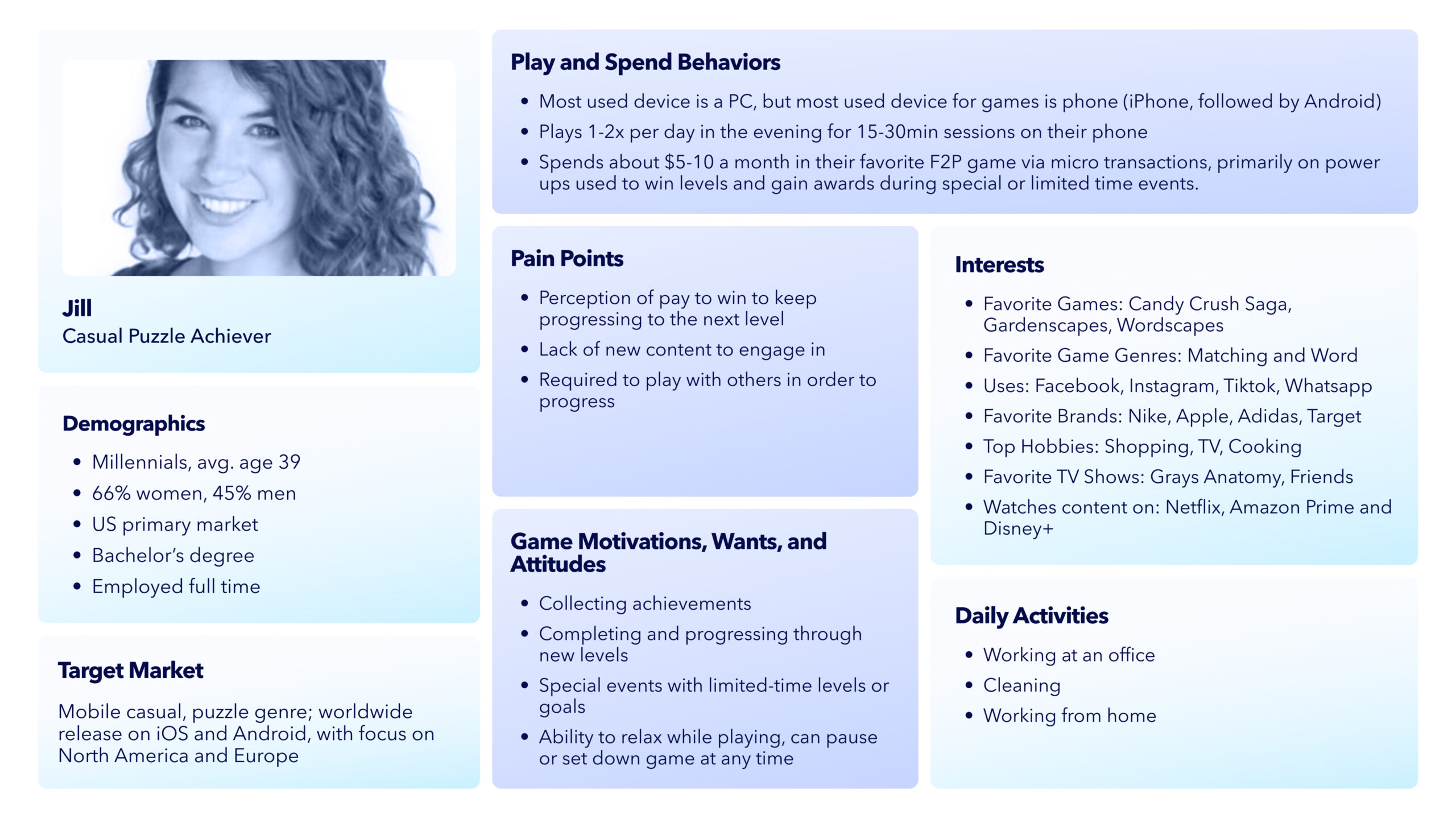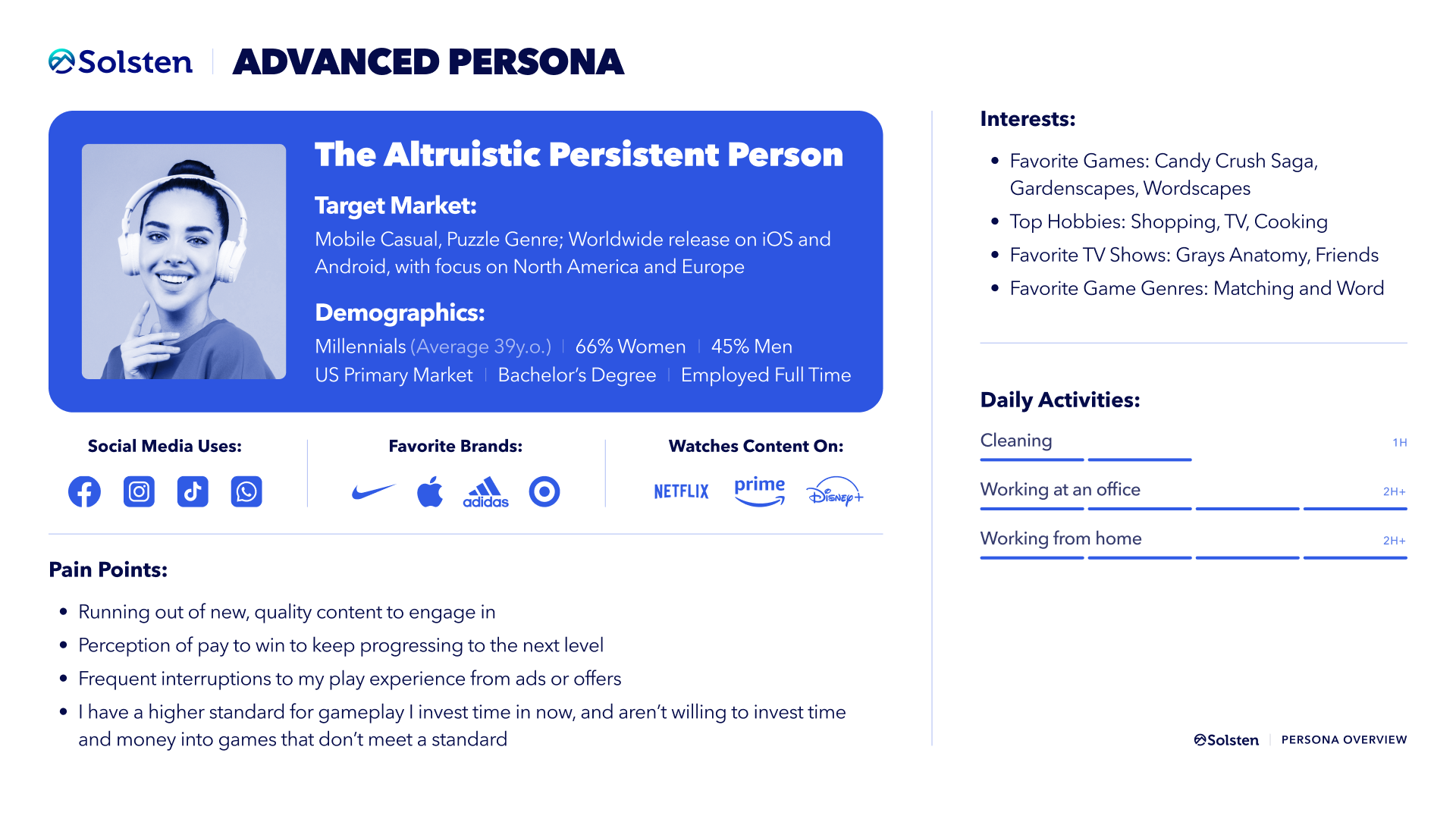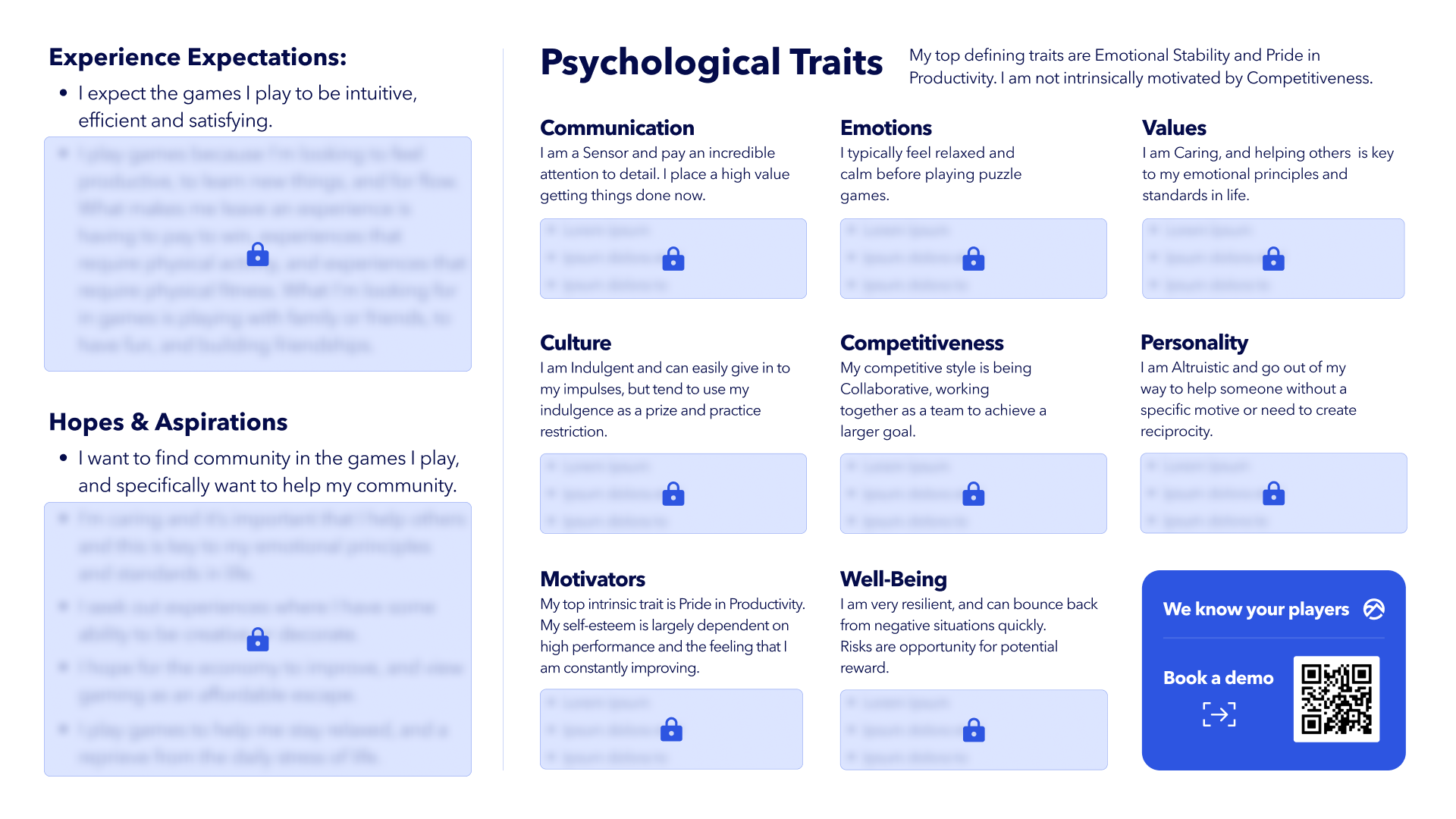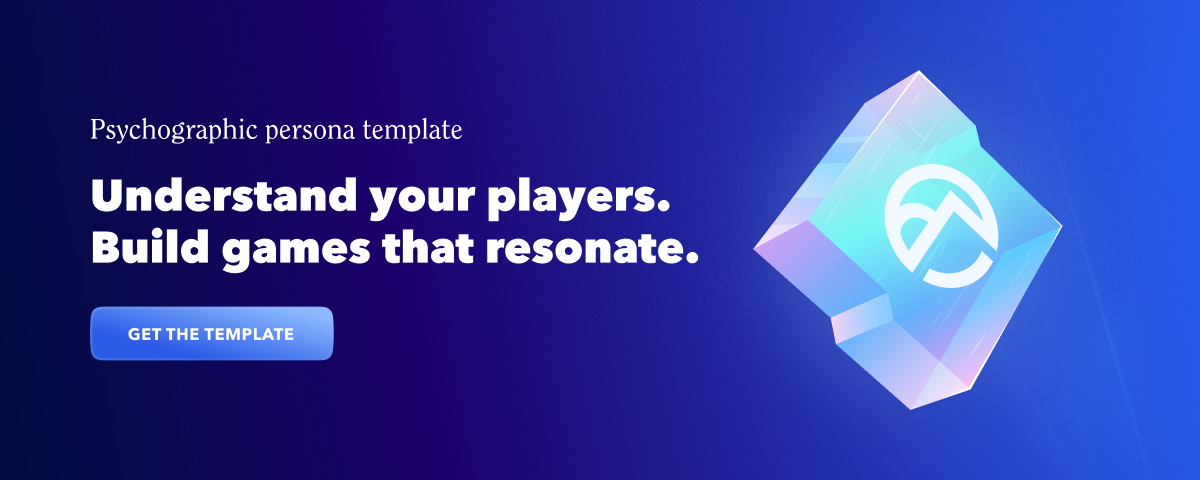Understanding your players is not just a part of the process—it’s the cornerstone of creating a game that predictably resonates, engages, and ultimately succeeds. Player personas can take many forms but the most valuable personas go beyond mere demographic segmentation and preferences. Leading companies like EA, Sony, and Supercell are prioritizing player strengthen understanding to and validate game concepts. Learn why personas are a must-have before starting development. When created properly, personas are a key part of the blueprint for the game development success—informing early decision making, improving development velocity, and ensuring you create the next hit game.
Player expectations are on the rise, and aligning early mechanics, narrative, monetization models, art styles, etc. hedges against the common pitfalls of feature creep, resource misallocation, and team communication. Prioritize the player experience from Day 1 by creating next level personas that your development and marketing teams will actually use.
The Limitations of Traditional Personas
Creating basic personas is not simple as humans are incredible diverse and complex. At Solsten, we assess over 279 psychological traits and still understand there is more to unpack. Creating data-driven and actionable personas means ensuring comprehensiveness, accuracy, validity, and reliability of the data you are incorporating. Fragmented data does not fully capture the nuanced motivations, emotions, personality traits, behaviors, and preferences of diverse player segments. This fragmentation can lead to incomplete or biased personas that don’t truly represent the target audience.
The reliance on incomplete or inaccurately defined personas can have profound downstream impacts on game development. It risks leading teams to design features, narratives, and ultimately player experiences based on flawed assumptions about what players want or how they behave. Simplistic personas that veer into reductive caricatures can lead to the development of experiences that fail to resonate with their intended audience, leading to poor engagement, retention, and ultimately, commercial underperformance. Moreover, it can cause internal miscommunication and inefficiency within development teams, as the shared blueprint they rely on does not accurately reflect player needs and motivations. Thus, the challenge lies not only in gathering and analyzing data to create personas but also in continuously validating and updating them to reflect the ever-changing gaming landscape.
Psychographic Personas: The New Blueprint for Player Understanding
You’re probably familiar with traditional persona templates that use a combination of demographic information, behavioral data and game motivations. The data used in these types of personas is longer adequate for creating differentiated games in the market that stand a chance at breakout success. To compete in today’s market – or the future market – you need to dive way deeper into the motivations of your players. That’s where player psychology insights come in.
Traditional gamer motivations only allow for a limited set up variables to segment audiences. Using psychology based traits allows you to measure hundreds of variables to really narrow in on the unique characteristics of your target audience, and how your game specifically appeals to them.
See the comparison for yourself.
Here, we have an example of a more traditional persona. It focuses on the behavioral insights of the target audience, with some game motivational insights to color in why they will prefer some game features and mechanics. Data used for illustration purposes only.

Now, here’s an example of the new persona template. One that is focused on highlighting who your target player is really specifically, so you can hone in on why specific features are important to each persona. Data used for illustration purposes only.

 Here’s a specific example of how psychological traits vastly expand on game motivations.
Here’s a specific example of how psychological traits vastly expand on game motivations.
Let’s take Competition. Using game motivation models will tell you that “competition” is a key driver of your target audience. Great.
But if we are to go a few steps further and use psychological traits, we can understand not that the audience is competitive, but all the different aspects that make them motivated by Competition. So you can ask the question, how will we implement competitive mechanics into our game specifically in a way that we know will resonate with our target audience before any play tests are conducted?
Focusing your personas on your audience’s unique motivation, values and personality traits allow for game development that is precise but not prescriptive-based on what’s already been done. The scientific precision behind psychology based player data allows for innovative feature development that can lead to breakout hits. Player personas should be living, iterative tools that guide decision-making, not rigid archetypes that constrain creative thinking.
Solsten is the only company that can provide you with on-demand psychographic player insights, and we do this for any target market with industry-leading validity and reliability. For those early in development, we create personas to help validate product potential and optimize feature roadmaps. Once a game is launched, we can build personas off of the live player base to support live ops and events. Psychographic personas capture the nuanced diversity of your target audience, painting a vivid picture of who the players are, what makes them tick, and why they engage.
Learn More
____
Having access to the right tools empowers teams to efficiently validate game concepts and ensure they resonate with your target players. Making psychologically precise decisions about your game’s features and design early on can be the difference between a successful launch and a missed opportunity. Let’s take a closer look at other gaming insight tools and why leading studios work with Solsten to reliably predict the future success of their games.

